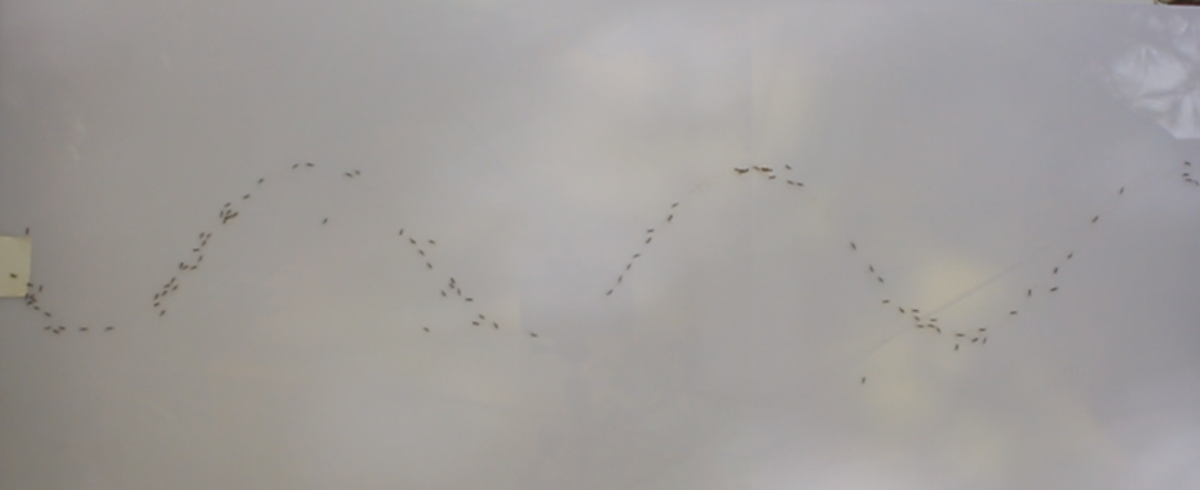Ant trails
Pheromone trails are of the most impressive and well known collective phenomena exhibited by ants. Such trails are the accumulated product of marking events by individual ants. In Paratrechina longicornis ants such events are easily recognizable using a side-view camera.
Fortunately, in this species the stereotypical pattern of motion that characterizes the deposition of a single scent mark could be identified using the ants speed profile as measured from a top-view.
This allowed is to achieve what might be the first, ever, depiction of the full dynamics of the formation of an ant pheromone trail. In the many years in which humans have been watching ant trails - mainly a single kind of trail was observed – a long trail connecting two immobile points (typically the nest and the food source). Using our novel experimental methodologies for identifying pheromone laying we have discovered a new kind of ant trail. This trail connects the immobile nest and the mobile, carried food load. Correspondingly, this trail is very different from the classically described trails. Mainly, instead of designating the whole path between the food source and the nest this trail only marks the next short step in which the carrying team should move.

We further study the geometrical aspects of foraging trails in the ant Tapinoma Israeli.
Further reading
- Ehud Fonio, Yael Heyman, Lucas Boczkowski, Aviram Gelblum, Adrian Kosowski, Amos Korman and Ofer Feinerman. “A new kind of ant trail achieves efficient routing in error prone conditions.” eLife 5: e20185. (2016).
